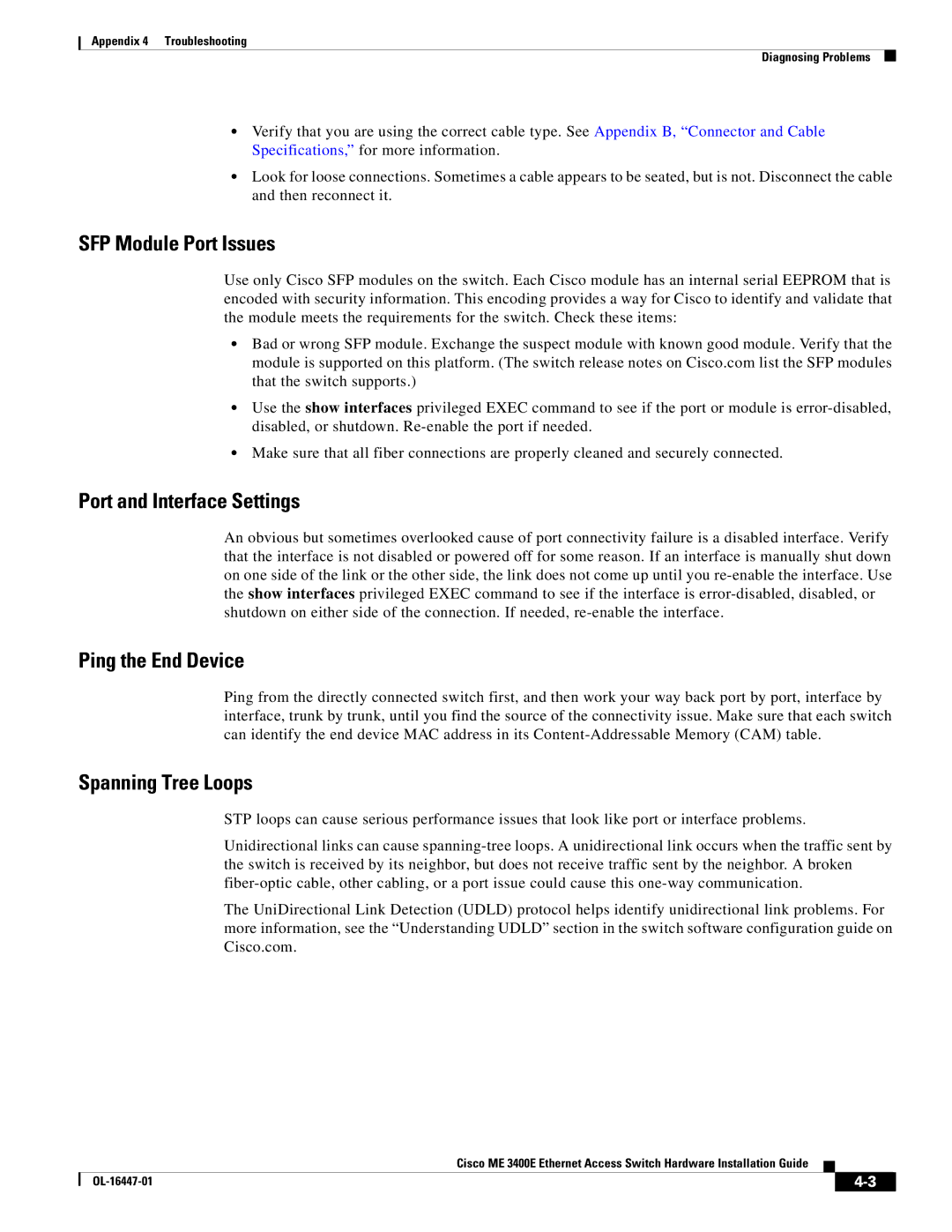
Appendix 4 Troubleshooting
Diagnosing Problems
•Verify that you are using the correct cable type. See Appendix B, “Connector and Cable Specifications,” for more information.
•Look for loose connections. Sometimes a cable appears to be seated, but is not. Disconnect the cable and then reconnect it.
SFP Module Port Issues
Use only Cisco SFP modules on the switch. Each Cisco module has an internal serial EEPROM that is encoded with security information. This encoding provides a way for Cisco to identify and validate that the module meets the requirements for the switch. Check these items:
•Bad or wrong SFP module. Exchange the suspect module with known good module. Verify that the module is supported on this platform. (The switch release notes on Cisco.com list the SFP modules that the switch supports.)
•Use the show interfaces privileged EXEC command to see if the port or module is
•Make sure that all fiber connections are properly cleaned and securely connected.
Port and Interface Settings
An obvious but sometimes overlooked cause of port connectivity failure is a disabled interface. Verify that the interface is not disabled or powered off for some reason. If an interface is manually shut down on one side of the link or the other side, the link does not come up until you
Ping the End Device
Ping from the directly connected switch first, and then work your way back port by port, interface by interface, trunk by trunk, until you find the source of the connectivity issue. Make sure that each switch can identify the end device MAC address in its
Spanning Tree Loops
STP loops can cause serious performance issues that look like port or interface problems.
Unidirectional links can cause
The UniDirectional Link Detection (UDLD) protocol helps identify unidirectional link problems. For more information, see the “Understanding UDLD” section in the switch software configuration guide on Cisco.com.
Cisco ME 3400E Ethernet Access Switch Hardware Installation Guide
|
| ||
|
|
